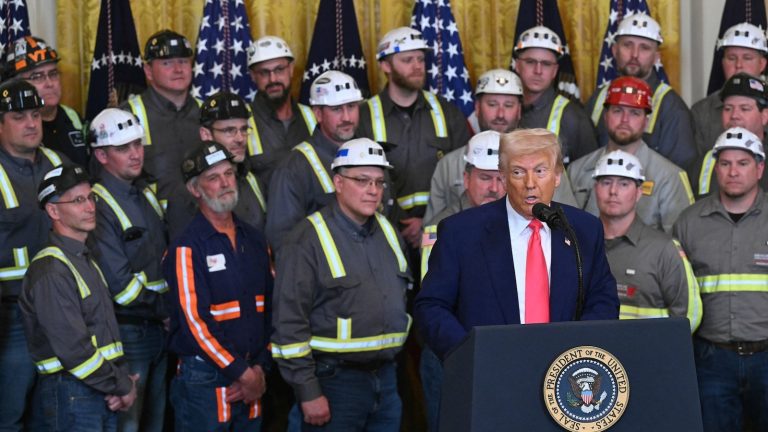On Tuesday, as coal miners crowded into the Oval Office to watch President Donald Trump sign an executive order meant to reinvigorate the coal industry, the federal agency responsible for protecting those same workers quietly announced that it would delay the implementation of new safety standards to protect them from deadly dust exposure.
The Mine Safety and Health Administration, or MSHA, said Tuesday that it was pausing enforcement of a hazardous dust safety rule decades in the making that was scheduled to take effect next week, startling industry and health experts who said the delay could deny miners of key protections to their long-term health.
“We just had the rug pulled out from under us,” Chris Williamson, former Assistant Secretary of Labor for Mine Safety and Health and the former head of MSHA during the Biden administration, told ABC News. “And that is very disappointing.”
Leaders at MSHA said the new rule, which lowers the amount of hazardous dust in the mines to a level that health experts have been calling on for decades, would be delayed another four months, prompting concern among some experts that the administration is reconsidering the new safety standards altogether.
Mining companies have pushed back on the new safety standards.
Compounding the delayed safety regulations for miners’ health is the gutting of the National Institute for Occupational Safety and Health, or NIOSH, a federal agency responsible for the Coal Workers’ Health Surveillance Program, which screens and monitors the respiratory health of miners.
MSHA said in court documents filed as part of ongoing litigation over the miner safety standards that it had to delay enforcement of the new rules due in part to the unexpected reduction in workforce at NIOSH — part of Trump’s broader slashing of the federal bureaucracy.

President Donald Trump speaks before signing an executive order to boost coal mining and production in the United States, in the East Room of the White House, April 8, 2025, in Washington.
Saul Loeb/AFP via Getty Images
Last week, in an email to facilities that offer black lung screenings for miners, a NIOSH official instructed participating facilities to halt submissions for black lung evaluation due to staffing cuts at the agency. The email, a copy of which was obtained by ABC News, concluded with, “We have no further information about the future of [the screening program] at this time.”
Dr. Brandon Crum, a Pikeville, Kentucky, doctor who was among the first doctors to recognize a rapid rise in complications from black lung in Central Appalachia, particularly among young miners, said he’s concerned about the cumulative effects of these developments.
“The pausing of the new silica rule along with the primarily shutting down of NIOSH and cutbacks in MSHA will put the miners’ health back into the stone ages,” Crum warned.
The surprise move to delay miner safety measures comes against the backdrop of Trump’s renewed push to return coal as a primary energy source in the United States. In the executive order signed Tuesday, Trump called for coal production to become a national priority, aiming to accomplish this in part by “removing federal regulatory barriers that undermine coal production.”
“We’re bringing back an industry that was abandoned,” Trump said at the White House, flanked by miners in hard hats. “China’s opening two plants every week.”
But without the new safety measures, experts fear a reinvigorated coal industry places undue risk on miners who have for generations suffered from debilitating respiratory conditions, like black lung, also known as coal worker’s pneumoconiosis.
“There is concern for significant delays in implementation and possibly never following through with the new rule at all,” said Dr. Crum.
Black lung, a debilitating and often fatal condition caused by inhalation of coal and silica dust during mining, affects roughly 1 in 5 miners who have worked in the Central Appalachian mines for twenty-five years or more, according to NIOSH.
Inhaled silica dust particles travel down airways and into the smallest spaces of the lung, causing scarring and eventually difficulty breathing, often becoming so severe that a lung transplant might be the only solution to avoid death.
Complicated black lung is on the rise because miners are being exposed to more silica dust than ever before as miners are forced to cut through more rock to access deep, hard-to-reach coal seams, work longer hours than previous generations, and get less time between shifts for their lungs to recover, according to experts.
Crum, whose clinic has diagnosed more than 600 cases of black lung, said, “The amount and severity of black lung is worse now than ever.”
“We have to have safety,” John Robinson, a disabled 28-year mining veteran suffering from the most advanced form of black lung, told ABC News.
“We have to have laws. We have to have regulations,” Robinson said. “And without that, I feel like … we’re going to have a lot of people dying.”



